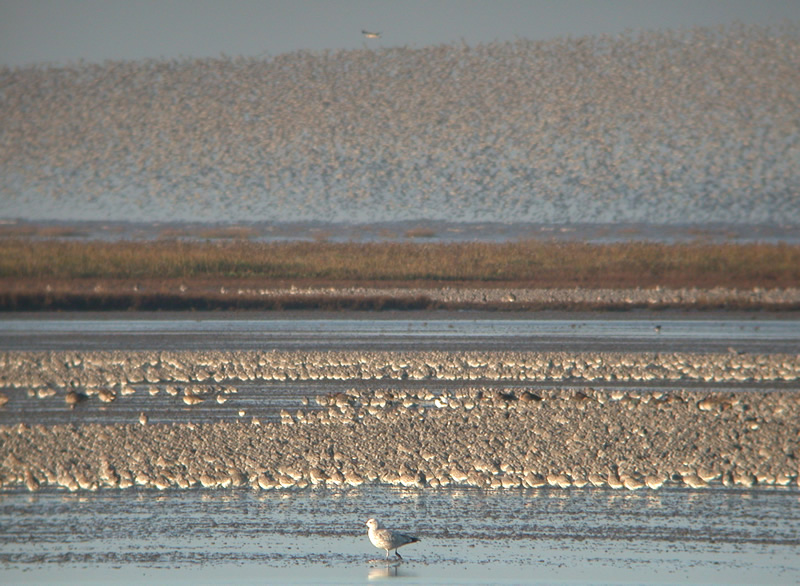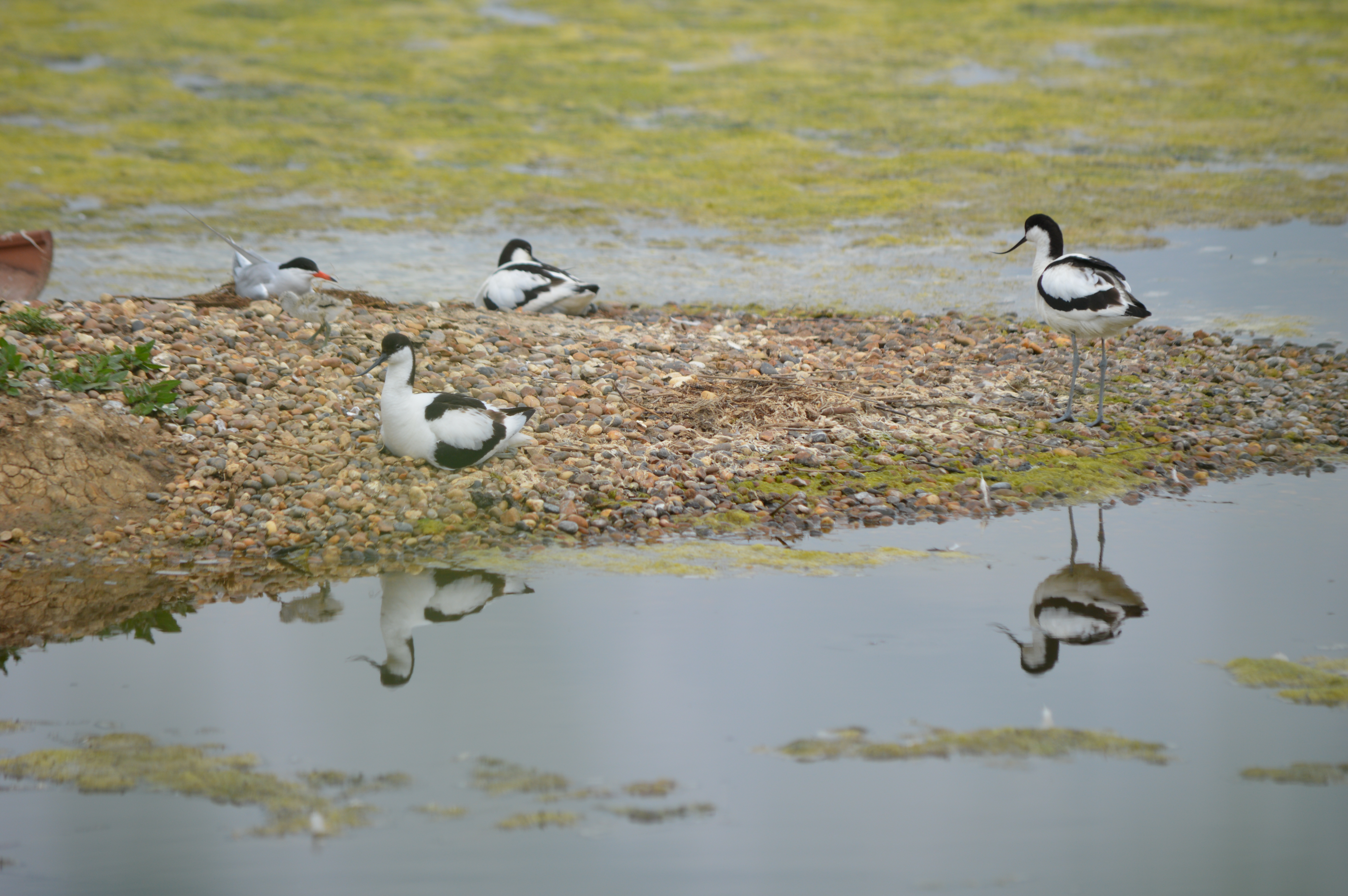|
Benfleet Marsh
Benfleet and Southend Marshes is an Site of Special Scientific Interest (SSSI) in Essex. It consists of mudflats, salt marshes, scrub and wild grassland, and includes the Southend-on-Sea foreshore. It has been so recognised for its biological (including ecological) value, rather than geological. A definition five percent larger forms the Benfleet and Southend Marshes Ramsar site and Special Protection Area. In the centre-west, more than ten percent of the Site is the Leigh National Nature Reserve (NNR), which has been appraised in detail in ''A Nature Conservation Review'' as a site of national importance. The SSSI and NNR include the eastern half of Two Tree Island, in Leigh on Sea which is managed by the Essex Wildlife Trust. A narrow majority of the Site is the Southend on Sea Foreshore Local Nature Reserve. The marshes and mudflats have internationally important numbers of wildfowl and wading birds, including the dark-bellied brent goose, grey plover, redshank and red knot ... [...More Info...] [...Related Items...] OR: [Wikipedia] [Google] [Baidu] |
Ramsar Convention
The Ramsar Convention on Wetlands of International Importance Especially as Waterfowl Habitat is an international treaty for the conservation and sustainable use of Ramsar sites (wetlands). It is also known as the Convention on Wetlands. It is named after the city of Ramsar in Iran, where the convention was signed in 1971. Every three years, representatives of the contracting parties meet as the Conference of the Contracting Parties (COP), the policy-making organ of the convention which adopts decisions (resolutions and recommendations) to administer the work of the convention and improve the way in which the parties are able to implement its objectives. COP12 was held in Punta del Este, Uruguay, in 2015. COP13 was held in Dubai, United Arab Emirates, in October 2018. List of wetlands of international importance The list of wetlands of international importance included 2,331 Ramsar sites in May 2018 covering over . The countries with most sites are the United Kingdo ... [...More Info...] [...Related Items...] OR: [Wikipedia] [Google] [Baidu] |
Dark-bellied Brent Goose
The brant or brent goose (''Branta bernicla'') is a small goose of the genus '' Branta''. There are three subspecies, all of which winter along temperate-zone sea-coasts and breed on the high-Arctic tundra. The Brent oilfield was named after the species. Description The brant is a small goose with a short, stubby bill. It measures long, across the wings and weighs . The under-tail is pure white, and the tail black and very short (the shortest of any goose). The species is divided into three subspecies: * Dark-bellied brant goose ''B. b. bernicla'' (Linnaeus, 1758) * Pale-bellied brant goose ''B. b. hrota'' ( Müller, 1776) (also known as light-bellied brent goose in Europe, and Atlantic brant in North America) * Black brant goose ''B. b. nigricans'' (Lawrence, 1846) (sometimes also known as the Pacific brant in North America) Some DNA evidence suggests that these forms are genetically distinct; while a split into three separate species has been proposed, it is not wid ... [...More Info...] [...Related Items...] OR: [Wikipedia] [Google] [Baidu] |
Special Protection Areas In England
Special or specials may refer to: Policing * Specials, Ulster Special Constabulary, the Northern Ireland police force * Specials, Special Constable, an auxiliary, volunteer, or temporary; police worker or police officer Literature * ''Specials'' (novel), a novel by Scott Westerfeld * ''Specials'', the comic book heroes, see ''Rising Stars'' (comic) Film and television * Special (lighting), a stage light that is used for a single, specific purpose * ''Special'' (film), a 2006 scifi dramedy * ''The Specials'' (2000 film), a comedy film about a group of superheroes * ''The Specials'' (2019 film), a film by Olivier Nakache and Éric Toledano * Television special, television programming that temporarily replaces scheduled programming * ''Special'' (TV series), a 2019 Netflix Original TV series * ''Specials'' (TV series), a 1991 TV series about British Special Constables * ''The Specials'' (TV series), an internet documentary series about 5 friends with learning disabiliti ... [...More Info...] [...Related Items...] OR: [Wikipedia] [Google] [Baidu] |
Ramsar Sites In England
Ramsar may refer to: * Places so named: ** Ramsar, Mazandaran, city in Iran ** Ramsar, Rajasthan, village in India * Eponyms of the Iranian city: ** Ramsar Convention concerning wetlands, signed in Ramsar, Iran ** Ramsar site, wetland listed in accord wth the Ramsar Convention * Others ** Ramsar Palace The Ramsar Palace or Marmar Palace is one of the historic buildings and royal residences in Iran. The palace is in Ramsar, a city on the coast of the Caspian Sea. History The Ramsar Palace was established on a land of 60,000 square meters in 193 ..., a palace in Ramsar, Mazandaran See also * :Ramsar sites {{Disambig, geo ... [...More Info...] [...Related Items...] OR: [Wikipedia] [Google] [Baidu] |
Melanargia Galathea
''Melanargia galathea'', the marbled white, is a medium-sized butterfly in the family Nymphalidae. Despite its common name and appearance, this butterfly is one of the "browns", of the subfamily Satyrinae. This species can be found across most of Europe, southern Russia, Asia Minor and Iran. It is found in forest clearings and edges, meadows and steppe where it occurs up to above sea level. The caterpillars feed on various grasses. Subspecies Subspecies include:"''Melanargia'' Meigen, 1828" at Markku Savela's ''Lepidoptera and Some Other Life Forms'' *''Melanargia galathea galathea'' Europe, southern Urals *''Melanargia galathea donsa'' Fruhstorfer, 1916 Caucasus *''Melanargia galathea lucasi'' (Rambur, 1858) North Africa * ... [...More Info...] [...Related Items...] OR: [Wikipedia] [Google] [Baidu] |
White-letter Hairstreak
The white-letter hairstreak (''Satyrium w-album'') is a butterfly in the family Lycaenidae. Appearance and behaviour A dark little butterfly that spends the majority of its life in the tree tops, feeding on honeydew, making it best observed through binoculars. The uppersides are a dark brown with a small orange spot in the bottom corner of the hindwing. The male has a small pale spot on the forewings made up of scent scales. The undersides are a lighter brown with a thin white line, the "hairstreak", which gives this group of butterflies their name. On the hindwing this streak zigzags to form a letter W (or M) from which this species gets its name. The outer edge of the hindwing has an orange border, but there is no orange on the forewings as on the similar black hairstreak and there are two short tails, the female's longer than the male's on the hindwings. Part of a group known as "lateral baskers", they always rest with their wings closed, usually at right-angles to the sun dur ... [...More Info...] [...Related Items...] OR: [Wikipedia] [Google] [Baidu] |
Red Knot
The red knot or just knot (''Calidris canutus'') is a medium-sized shorebird which breeds in tundra and the Arctic Cordillera in the far north of Canada, Europe, and Russia. It is a large member of the ''Calidris'' sandpipers, second only to the great knot. Six subspecies are recognised. Their diet varies according to season; arthropods and larvae are the preferred food items at the breeding grounds, while various hard-shelled molluscs are consumed at other feeding sites at other times. North American breeders migrate to coastal areas in Europe and South America, while the Eurasian populations winter in Africa, Papua New Guinea, Australia, and New Zealand. This species forms enormous flocks when not breeding. Taxonomy, systematics, and evolution The red knot was first described by Carl Linnaeus in his landmark 1758 10th edition of ''Systema Naturae'' as ''Tringa canutus''. One theory is that it gets its name and species epithet from King Cnut; the name would refer to the kn ... [...More Info...] [...Related Items...] OR: [Wikipedia] [Google] [Baidu] |
Common Redshank
The common redshank or simply redshank (''Tringa totanus'') is a Eurasian wader in the large family Scolopacidae. Taxonomy The common redshank was formally described by the Swedish naturalist Carl Linnaeus in 1758 in the tenth edition of his ''Systema Naturae'' under the binomial name ''Scolopax totanus''. It is now placed with twelve other species in the genus ''Tringa'' that Linnaeus had introduced in 1758. The genus name ''Tringa'' is the New Latin name given to the green sandpiper by the Italian naturalist Ulisse Aldrovandi in 1603 based on Ancient Greek ''trungas'', a thrush-sized, white-rumped, tail-bobbing wading bird mentioned by Aristotle. The specific ''totanus'' is from , the Italian name for this bird. Six subspecies are recognised: * ''T. t. robusta'' ( Schiøler, 1919) – breeds in Iceland and the Faroe Islands; non-breeding around the British Isles and west Europe * ''T. t. totanus'' (Linnaeus, 1758) – breeds in west, north Europe to west Siberia; winters in ... [...More Info...] [...Related Items...] OR: [Wikipedia] [Google] [Baidu] |
Grey Plover
The grey plover or black-bellied plover (''Pluvialis squatarola'') is a large plover breeding in Arctic regions. It is a long-distance migrant, with a nearly worldwide coastal distribution when not breeding. Taxonomy The grey plover was formally described by the Swedish naturalist Carl Linnaeus in 1758 in the tenth edition of his ''Systema Naturae'' under the binomial name ''Tringa squatarola''. It is now placed with three other plovers in the genus ''Pluvialis'' that was introduced by the French onithologist Mathurin Jacques Brisson in 1760. The genus name is Latin and means relating to rain, from ''pluvia'', "rain". It was believed that they flocked when rain was imminent. The species name ''squatarola'' is a Latinised version of ''Sgatarola'', a Venetian name for some kind of plover. The English common name used for this species differs in different parts of the world. It is generally known as "grey plover" in the Old World and "black-bellied plover" in the New World. Th ... [...More Info...] [...Related Items...] OR: [Wikipedia] [Google] [Baidu] |
Site Of Special Scientific Interest
A Site of Special Scientific Interest (SSSI) in Great Britain or an Area of Special Scientific Interest (ASSI) in the Isle of Man and Northern Ireland is a conservation designation denoting a protected area in the United Kingdom and Isle of Man. SSSI/ASSIs are the basic building block of site-based nature conservation legislation and most other legal nature/geological conservation designations in the United Kingdom are based upon them, including national nature reserves, Ramsar sites, Special Protection Areas, and Special Areas of Conservation. The acronym "SSSI" is often pronounced "triple-S I". Selection and conservation Sites notified for their biological interest are known as Biological SSSIs (or ASSIs), and those notified for geological or physiographic interest are Geological SSSIs (or ASSIs). Sites may be divided into management units, with some areas including units that are noted for both biological and geological interest. Biological Biological SSSI/ASSIs may ... [...More Info...] [...Related Items...] OR: [Wikipedia] [Google] [Baidu] |
Essex Wildlife Trust
The Essex Wildlife Trust (EWT) is one of 46 wildlife trusts which cover the United Kingdom. The EWT was founded in 1959, and it describes itself as Essex's leading conservation charity, which aims to protect wildlife for the future and the people of the county. As of January 2017, it has over 34,000 members and runs 87 nature reserves, 2 nature parks and 11 visitor centres. Essex has one of the longest coastlines of any English county, with saltmarshes, lagoons, mudflats, grazing marshes, reedbeds and shingle. Its ancient forests were formerly important to the local economy, with wood being used for fuel, construction and bark in the tanning industry. Coppicing is being re-introduced by the EWT to encourage woodland grasses, flowers, invertebrates and birds. A few grasslands on the heavy clays of south- and mid-Essex are still grazed according to traditional methods, supporting a mixture of pasture and fen. Some brownfield sites, often on contaminated soil, have populations of na ... [...More Info...] [...Related Items...] OR: [Wikipedia] [Google] [Baidu] |




.jpg)

